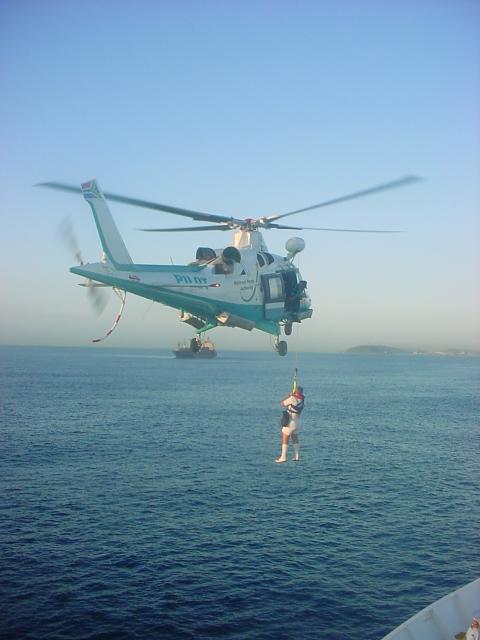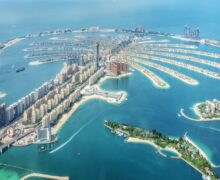
Vessel Pilotage Operations: Managing a Perilous Task – Manjur Khan (19N)
[Capt. Manjur Khan (LinkedIn): Master Mariner (Aus), serving as Marine Pilot-Loading Master for LNG Terminals (Gorgon & Wheatstone). Previously served Offshore Support Vessels operation management, Commonwealth of Australia (AMSA) & State (NSW) Maritime Regulatory Administrations; Liner Shipping operations as Port Captain, and as seagoing officer / master on various ocean going & offshore vessels]
Introduction
For centuries, marine pilots have been employed on board ships to guide vessels into or out of port safely – or wherever navigation may be considered hazardous, particularly when a shipmaster is unfamiliar with the area of waters. Marine pilots come aboard ship to assist the master and crew to safely navigate through the most treacherous parts of the voyage, arriving and departing a port / harbour and estuary. These highly qualified mariners possess intimate local knowledge of the pilotage waters, and highly developed ship handling skills to ensure safe arrival and departure of vessels.
The relevant pilotage legislation defines a ‘Pilot’ as – “any person not belonging to a ship who has the conduct thereof”. In other words, someone other than a member of the ship’s crew who has control over the speed, direction, and movement of the ship in designated waters. Prior to the pilotage legislation were developed and established, pilots were known as ‘hobblers’, would compete with one another. The first to reach an incoming ship would navigate it to the docks and receive payment.
Marine Pilot Training and Certification
The importance of employing qualified and licensed marine pilots in approaches to ports and other areas where specialized local knowledge is required was formally recognized by the International Maritime Organisation (IMO) in 1968, when the Organization adopted Assembly resolution A.159(ES.IV) – Recommendation on Pilotage. The resolution recommends Governments organize pilotage services where they would be likely to prove more effective than other measures and to define the ships and classes of ships for which employment of a pilot would be mandatory.
The IMO Assembly in 2003 adopted resolution A.960(23) – Recommendations on training and certification and operational procedures for maritime pilots other than deep-sea pilots, which includes Recommendation on Training and Certification of Maritime Pilots other than Deep sea Pilots and Recommendation on Operational Procedures for Maritime Pilots other than Deep Sea Pilots.
Recognising the perilous nature of the pilot transfers to and from the ships, IMO has also adopted resolution A.1045(27) – Recommendation on Pilot Transfer Arrangements and approved Required Boarding Arrangement for Pilots (MSC.1/Circ.1428). IMO introduced measures through The Safety of Life At Sea 1974 (SOLAS) Regulation V/23 in July 2012 to improve the safety of pilot transfer arrangements provided by vessels.
Highly qualified marine pilots are usually employed by the local port or maritime administration and provide their services to ships for a fee, calculated in relation to the ship’s tonnage, draught or other criteria. Pilots may be required to possess prior maritime experience prior to engaging as a trainee pilot. For example, pilot trainees must have a master’s licence, command experience on offshore or deep draft vessels, pass written & oral examinations and simulator exercises, followed by years of practical training gaining experience with different types of vessel and docking facilities. Following licensing, pilots are also required to engage in continuing educational and professional development programmes to maintain currency of knowledge and skill-sets.
Training of marine pilots is the responsibility of the relevant Port Authority /Maritime administration or Pilotage Services Provider. A marine pilot must possess intimate local knowledge of the pilotage area and display highly developed ship-handling and manoeuvring skills and competencies. The minimum standard of these skills and competencies are to be determined by the Port Authority /Maritime Administration and are to be appropriate for the pilotage port to which that licence relates and type and size of vessels being piloted.
These skills and competencies may be acquired through a combination of factors including but not limited to: (a) experience (b) on-the-job training by licenced marine pilots (c) manned model training and (d) simulator training. The required elements for training & assessment, and length of training are to be determined by the Port Authority /administration and Pilotage Services Provider in accordance with the International and National Legislation /Pilotage Training Standards or Codes, and by the management of risk through the Port Authority’s Safety Management Systems.
Maritime Pilotage – A Complex and Perilous Task
The Merchant Shipping Act 1995 (UK) completes the definition gap in the Pilotage Act. The Pilotage Act 1987 (UK) and Merchant Shipping Act 1995 (UK) work together to form the basis of the United Kingdom’s pilotage regime.

This is identical to the Australian Commonwealth definition. The Pilotage Act leaves open to ‘competent state authorities’ to determine whether pilotage is compulsory in their ports.
Canada, being a Commonwealth country, has followed the United Kingdom model. All matters pertaining to pilotage in Canada are governed by the Pilotage Act, RSC 1985, c P-14.
Unlike both Australian and United Kingdom legislation, American law on pilotage is derived from a mixture of both statute and case law. The pilot’s role in American law is relatively consistent with other common law jurisdictions.
The prime obligation of pilots is to provide a critical public safety service by ensuring the careful management and free flow of all traffic within their pilotage area, thus protecting the environment. Pilots should be able to exercise their professional judgement undeterred by commercial or economic pressure. Pilotage is an essential part of a Ports Safety Management System and compulsory pilotage is considered to be the most effective and important form of navigation safety regulation. The pilot is to provide accurate information and advice to master to ensure the safe navigation of the ships. In practice, the pilot will often ‘con’ the ship on the master’s behalf.
There is a general assumption that has existed for centuries – pilotage commences when the pilot steps on board the vessel. In actual fact, when the master hands over the conduct of the vessel to the pilot, the latter is legally responsible for his own actions. The master’s right to interfere is restricted to circumstances where there is clear evidence of the pilot’s incapability or incompetence. Unwarranted interference by the master would be treated as the ship not being piloted. After all, if a pilot is not on board the vessel, the master is still navigating. Therefore, it makes much more sense to consider pilotage to commence on completion of a Master-Pilot Exchange (MPX), which cannot be effected until the pilot steps onto the bridge. Having ‘conduct’ requires physical presence of the pilot, and a clear & unambiguous handover between the master and pilot.
It is essential, a face-to-face Master-Pilot Exchange (MPX) results clear and effective communication, and the willingness of the pilot, master and bridge personnel to work together as part of a bridge management team. English language, or a mutually agreed common language, or the IMO Standard Marine Communication Phrases should be used, and all members of the team share a common mental model and sense of responsibility to highlight any perceived errors or omissions by other team members, for clarification. The exchange of information regarding pilotage and the passage plan should include clarification of, but not limited to:
o Roles and responsibilities of the master, pilot and other members of the bridge team;
o Local conditions including navigational or traffic constraints;
o Any limitations affecting pilotage operations;
o Tidal and current information;
o Berthing and mooring plans;
o Navigational intentions;
o Proposed use of tugs;
After taking this information into account and comparing the pilot’s proposed plan with that initially developed on board, the pilot and master should agree an overall final plan early in the passage before the ship is committed. The master must not commit his ship to the passage until satisfied with the plan. All parties should be aware that elements of the plan may also change during pilotage.
Contingency plans should also be put in place which should be followed in the event of a malfunction or a shipboard emergency, identifying possible abort points and safe grounding areas. These should be discussed and agreed between the pilot and master.
The master retains the ultimate responsibility for the safety of his ship. He and his bridge personnel have a duty to support the pilot and to monitor his actions. This should include querying any actions or omissions by the pilot (or any other member of the bridge management team) if inconsistent with the passage plan or if the safety of the ship is in any doubt.
The necessity of co-operation and a close working relationship between the master and pilot during berthing and un-berthing operations is extremely important to the safety of the ship. In particular, both the pilot and the master should discuss and agree who will be responsible for operating key equipment and controls (such as main engine, helm and thrusters). Pilot to communicate with the local port authorities, pilot vessel, tugs and other stakeholders to ensure safe and efficient operations.
Safe and efficient pilotage is chiefly dependent upon the effectiveness of the communications and information exchanges between the pilot, the master and other bridge personnel, and upon mutual understanding each has for the functions and duties of the others. Ship’s personnel, shore based ship management and the relevant port and pilotage authorities should utilise the proven concept of “Bridge Team Management”. Establishment of effective co-ordination between the pilot, master and other ship’s personnel, taking due account of the ship’s systems and equipment available to the pilot is a prerequisite for the safe conduct of the ship through pilotage waters.
The presence of a pilot on the ship’s bridge does not relieve the master or officer in charge of the navigational watch (OOW) from their duties and obligations for the safe conduct of the ship.
Conclusion
The Master and Pilot relationship is an intriguing balance of mutual trust and respect, largely unwritten, which provides an unrivalled level of safety in a society that expects, and receives, the highest of standards from the shipping industry. Legally, the vessel master has full responsibility for safe navigation of their vessel, even if a pilot is on board. If they have clear grounds that the pilot may jeopardize the safety of navigation, they can relieve the pilot from their duties and ask for another pilot or, if not compulsory to have a pilot on board, navigate the vessel without one. In every case, during the time passed aboard for operation, the pilot shall remain under the master’s authority, and always out of “ship’s command chain”. The pilot remains aboard as an important and indispensable consultant to the master. The primary objectives of the master and crew should be getting the best services out of a pilot safely navigating the most hazardous part of the voyage
Reference:
UK P&I Club: https://www.ukpandi.com/knowledge-publications/article/international-best-practices-for-maritime-pilotage-1983/
AMSA: http://www.gbrmpa.gov.au/our-work/Managing-multiple-uses/shipping/compulsory-pilotage
IMO: http://www.imo.org/en/KnowledgeCentre/IndexofIMOResolutions/Pages/Default.aspx
Journal: http://classic.austlii.edu.au/au/journals/ANZMarLawJl/2010/12.pdf
Clear Seas: https://clearseas.org/en/blog/what-is-marine-pilotage/
CMPA: http://www.apmc-cmpa.ca/canadian-system.html
Wikipedia: https://en.wikipedia.org/wiki/Maritime_pilot
APA: http://www.americanpilots.org/index.php
IMPA: http://www.impahq.org/index.php
AMPI: https://www.ampi.org.au/
EMPA: http://empa-pilots.eu/
UK MPA: https://ukmpa.org/












Recent Comments